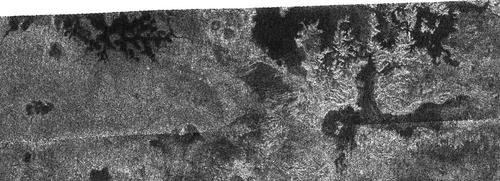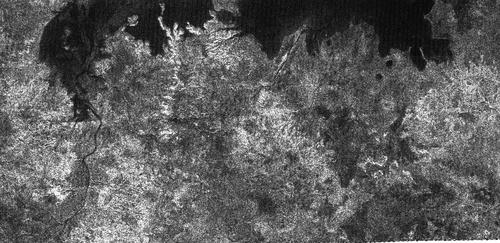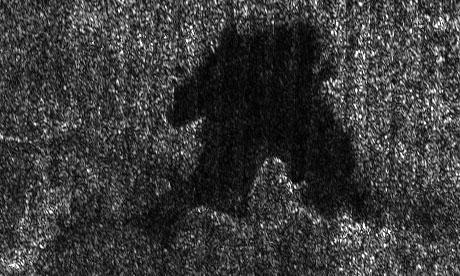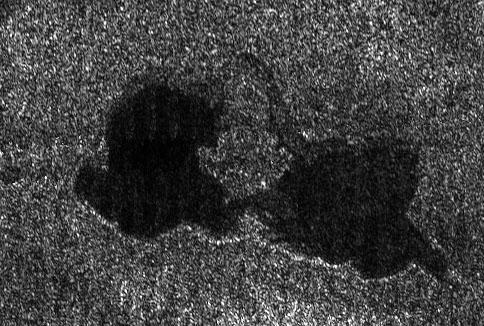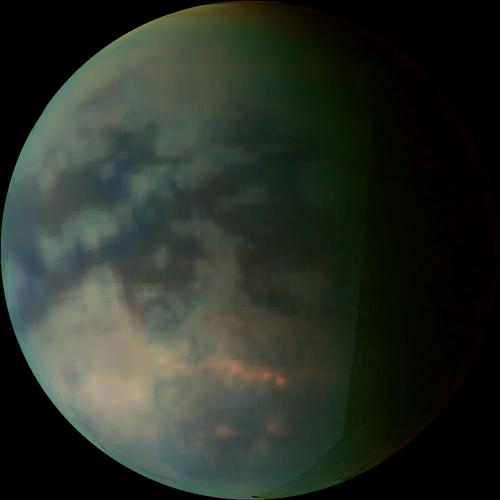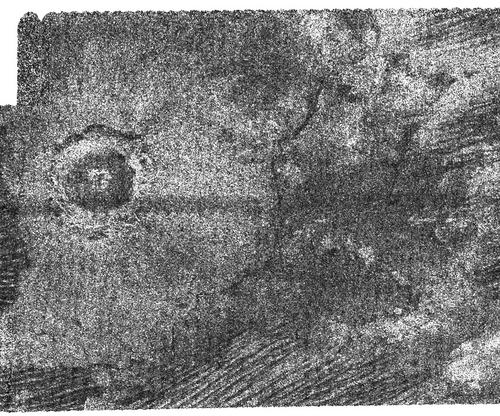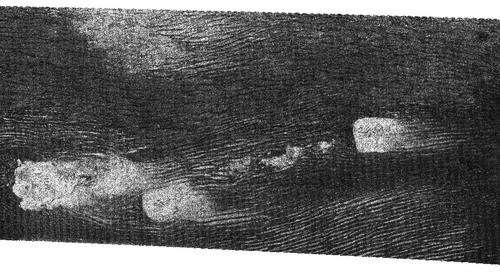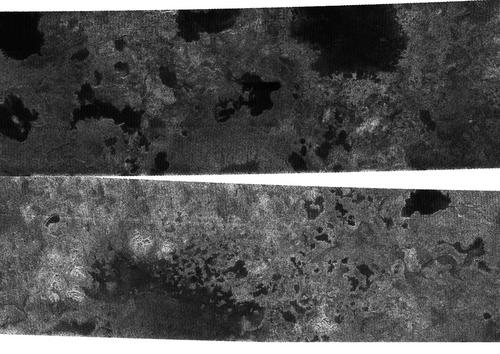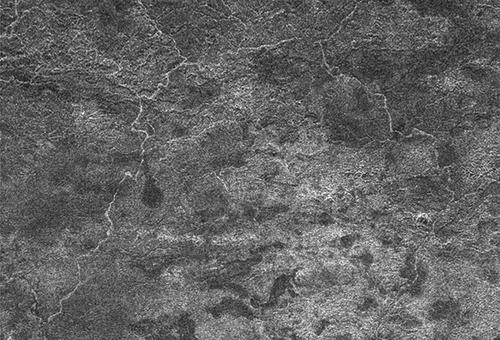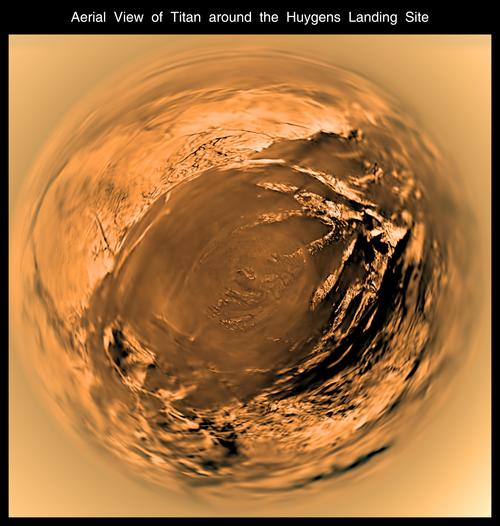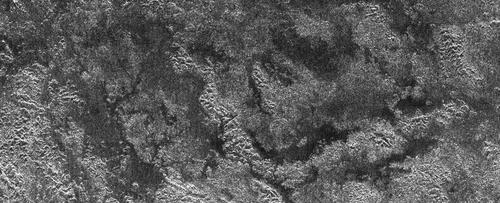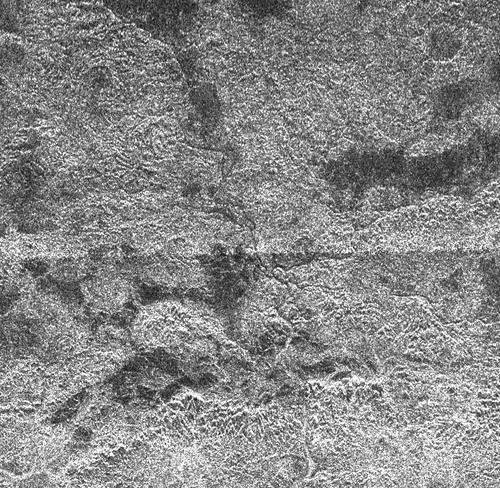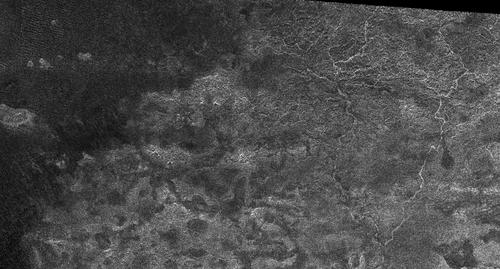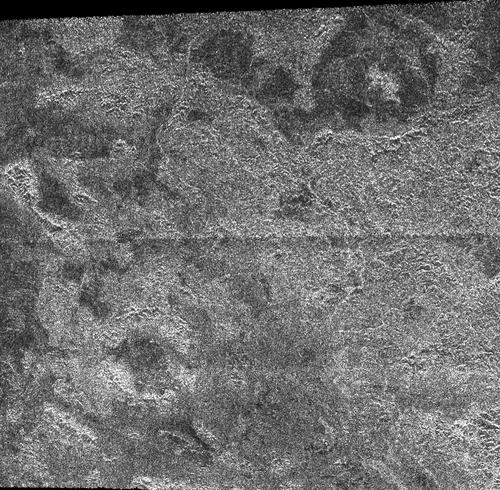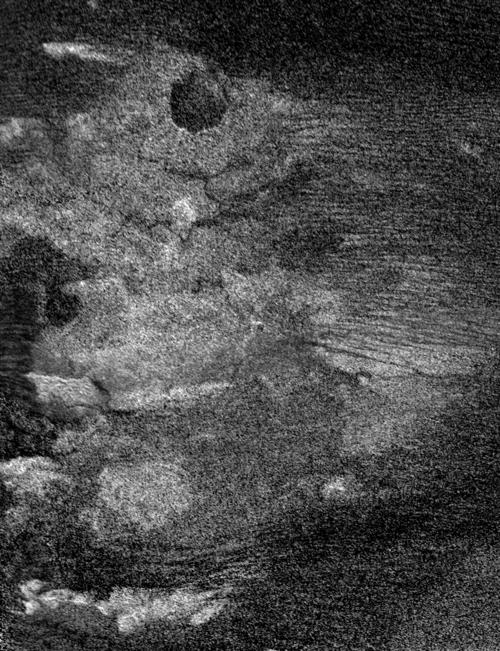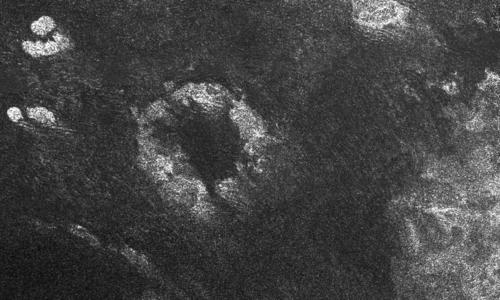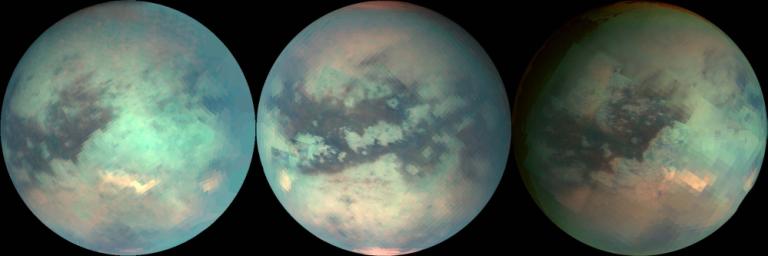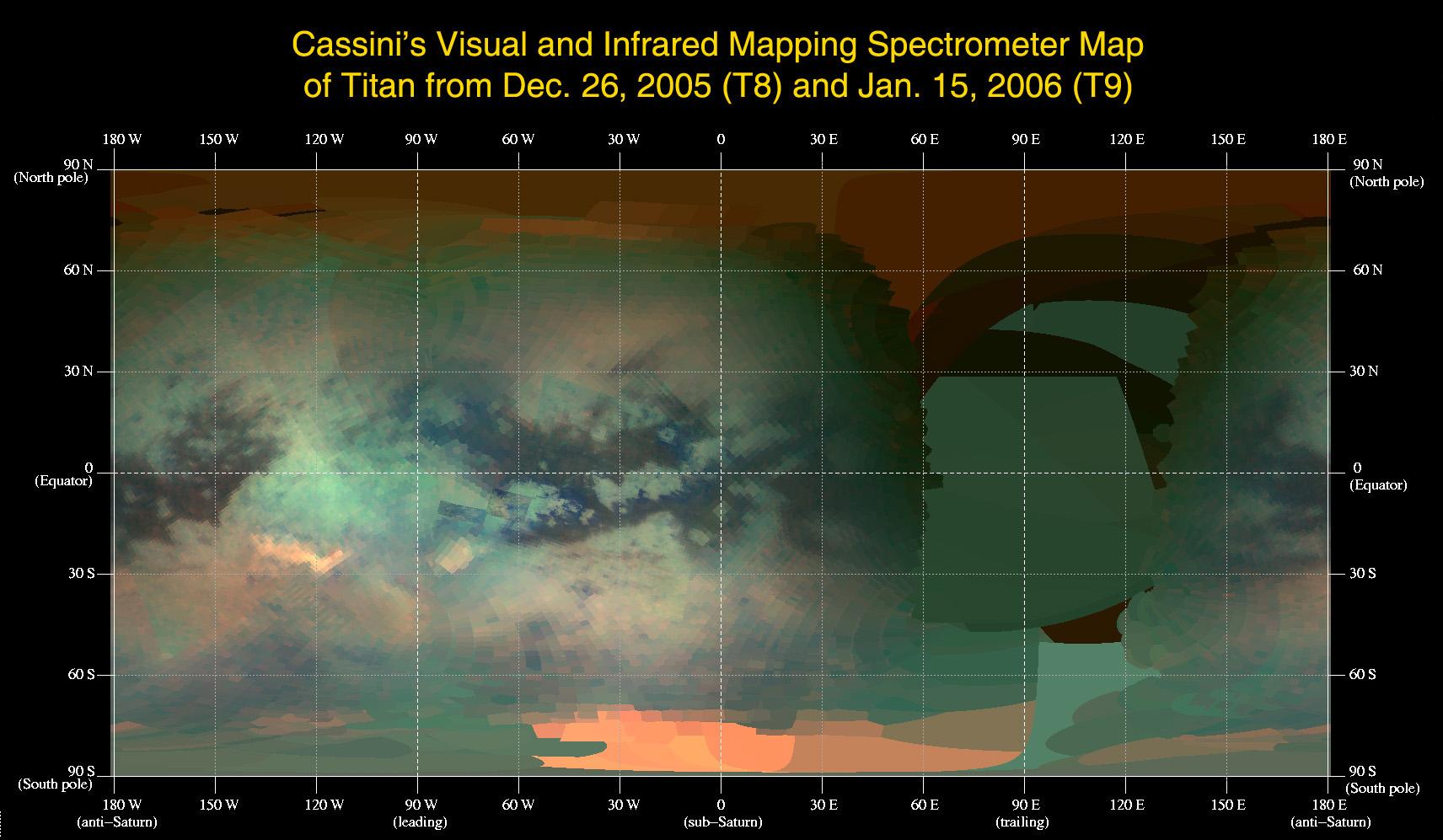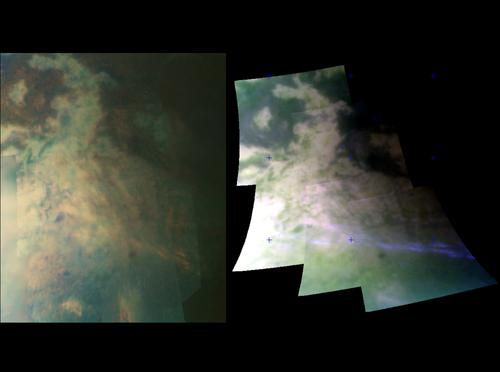
These infrared images were captured during the October 25 flyby designed to obtain the highest-resolution infrared views of Titan yet. They were taken at a distance of 15,000 kilometers ( 9,300 miles ) from Titan. The area is riddled by mountain ranges and reveals a cirrus-like cloud formation. A massive mountain range located just south of Titan's equator runs from southeast to northwest. It is about 150 kilometers long ( 93 miles ), 30 kilometers ( 19 miles ) wide and about 1.5 kilometers ( nearly a mile ) high. It probably results from material welling up below as the crust of Titan is pulled apart by tectonic forces. A circular feature, perhaps an impact basin can be spotted top left of the area. The meteoritic impact might have triggered tectonic events and distortions of the ice crust. Is the cloud linked to a volcanic activity ? not sure! The clouds might be produced when gaseous methane in Titan's atmosphere cools and condenses into methane fog as Titan's winds drive air over the mountains.
Image source: NASA, JPL
